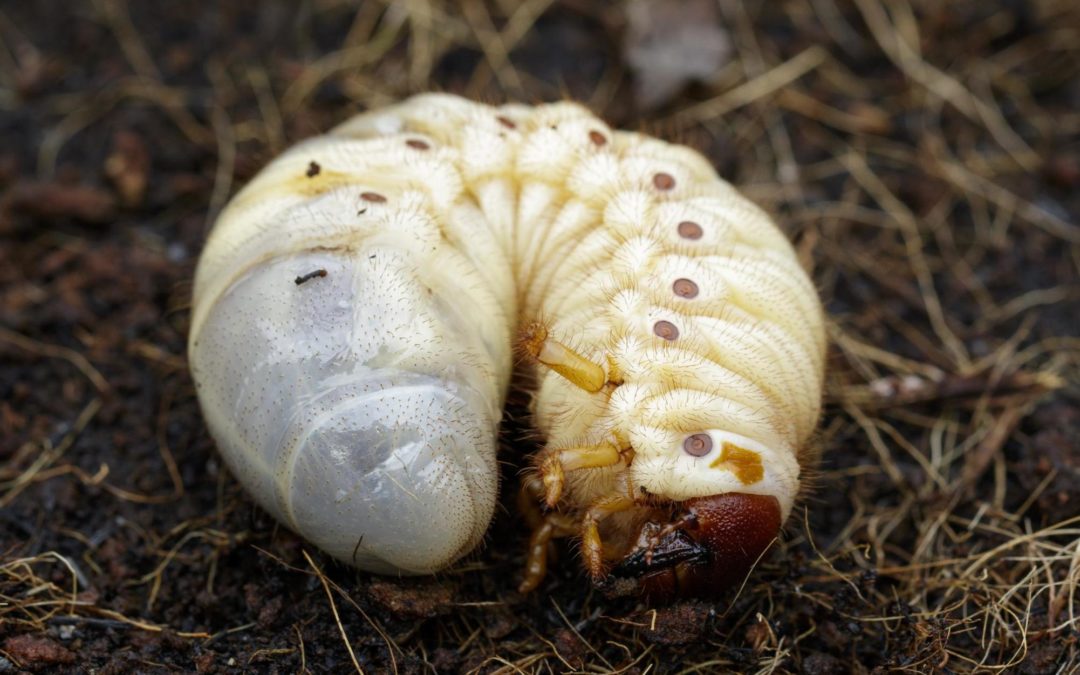Different from the common earthworm, grubs are horrible for your yard. They are most prevalent in summer when bugs are plentiful, and the wet grass offers an attractive place for them to lay their eggs. Learn to treat your lawn for grubs before they have the chance to make your yard miserable.
How do you Treat Your Lawn for Grubs
Brown Spots – Though summer is the standard time to see brown spots forming in your yard, these spots can be created by underground grubs that have destroyed the grass roots. This is a sign that you could have a grub issue.

Dead grass means you need to check for grubs
Dig Up the Grubs – Once you have seen brown spots and are thinking whether grubs are the wrongdoers, finding out might be as simple as digging a few inches into the ground. If you discover a few slimy-looking, pale grubs within a single square foot, they are most likely the reason for the brown places in your lawn.
Soft Ground – Soft ground could indicate root-stripped, loose soil that grubs have been eating. Unaffected spots will be harder because they’re still being kept together by the grass roots.
Grass Strength – Grubs love grass roots. If your grass roots have recently been eaten away, the grass could still look green, but come up quickly when pulled.
Look for Holes – Wild animals find grubs tasty and will gladly dig up your grass at nighttime to eliminate them. If you have a grub problem, you might begin to see that your lawn is getting dug up by creatures such as skunks and raccoons. Be sure that the dug-up dirt isn’t a molehill (molehills aren’t a sign of the presence of grubs).
One way to stop a grub problem is to let your yard go dormant in the summertime, making it a less pleasant place for bugs to lay their eggs. If you can’t stand to see your grass go brittle and dry, but find yourself with grubs in your lawn, your Orchard Park tree care experts can assist you in fighting them while keeping your soil healthy and intact. Don’t let those grubs get the best of you and destroy your landscape!


Recent Comments